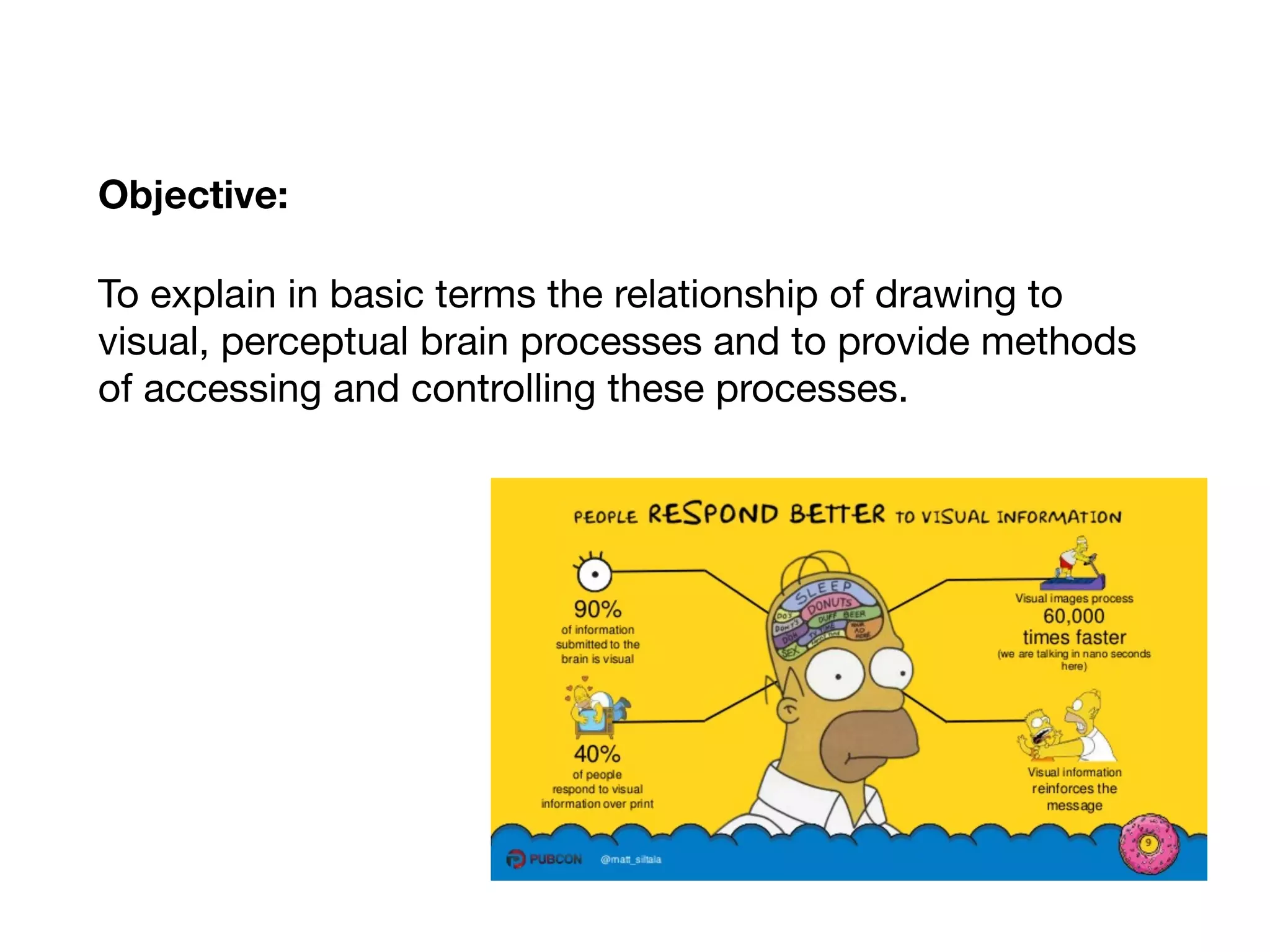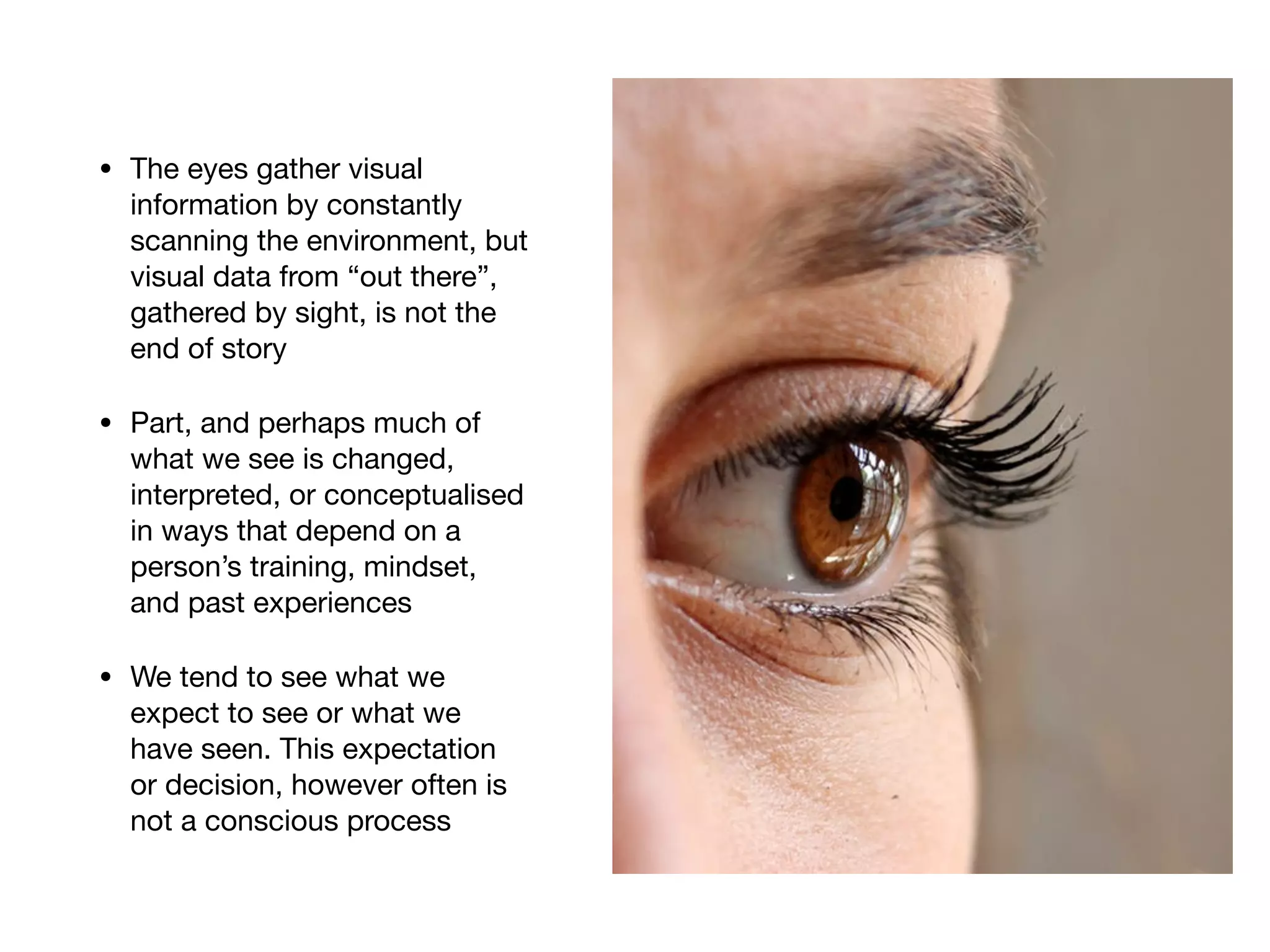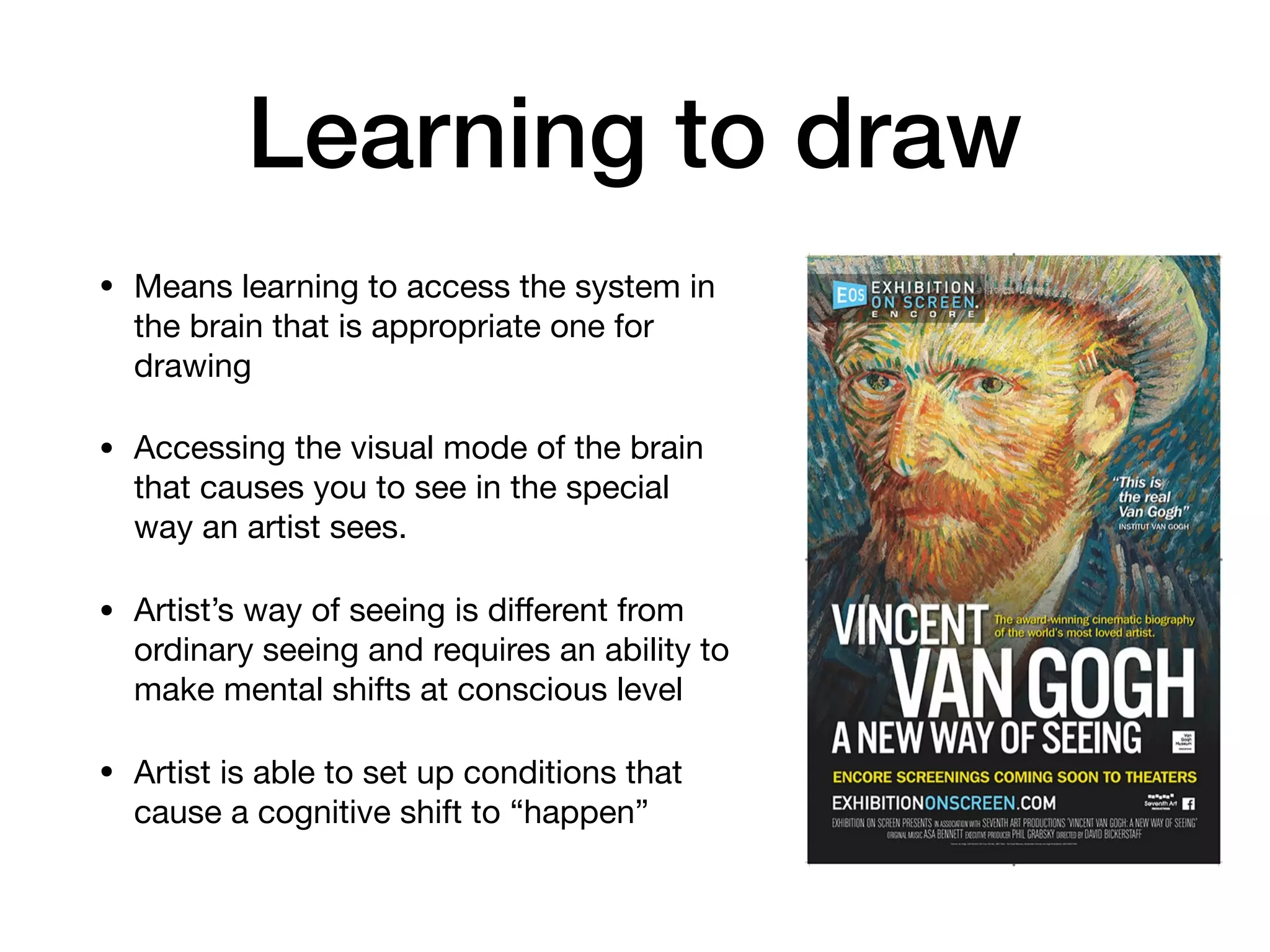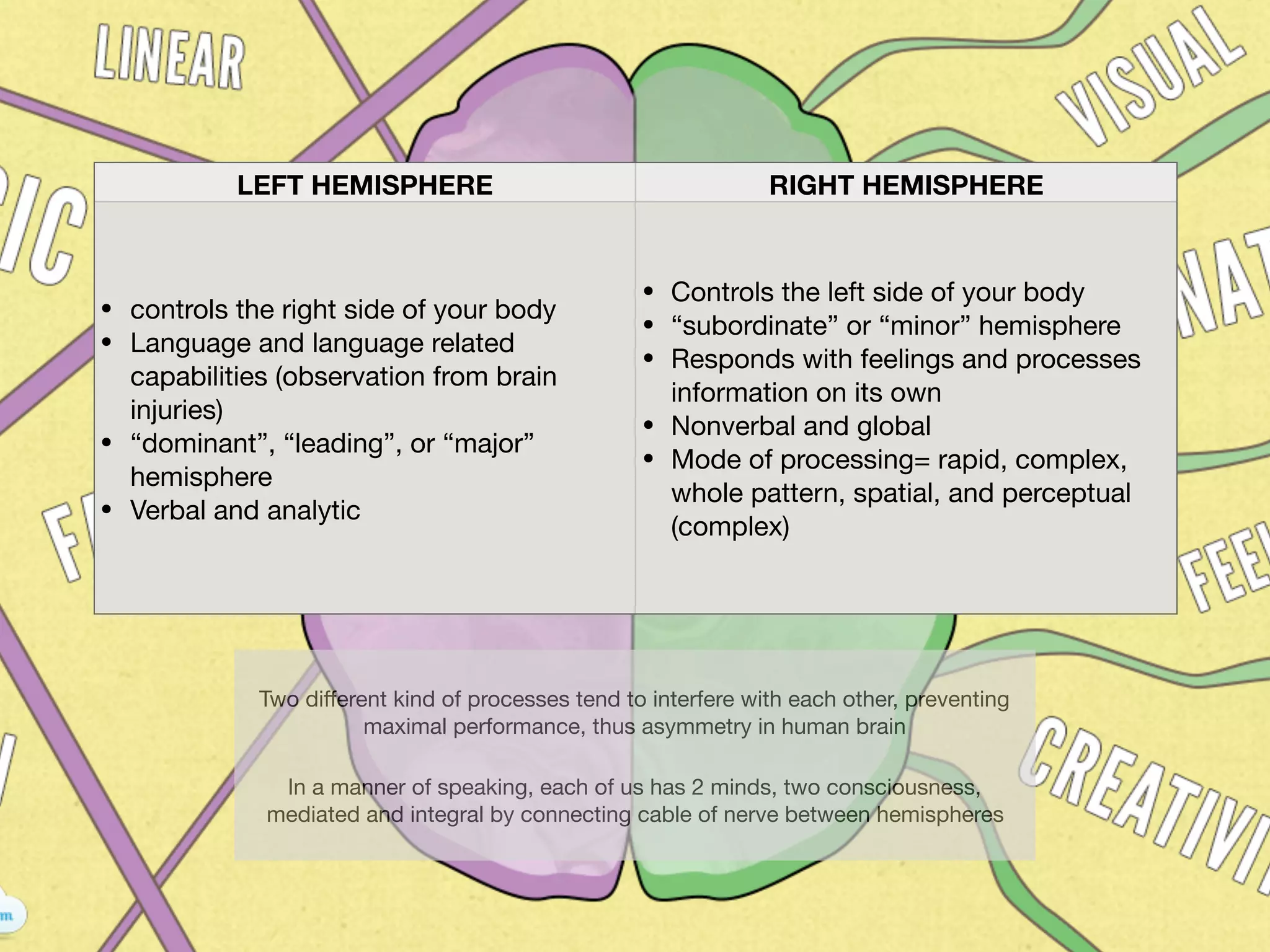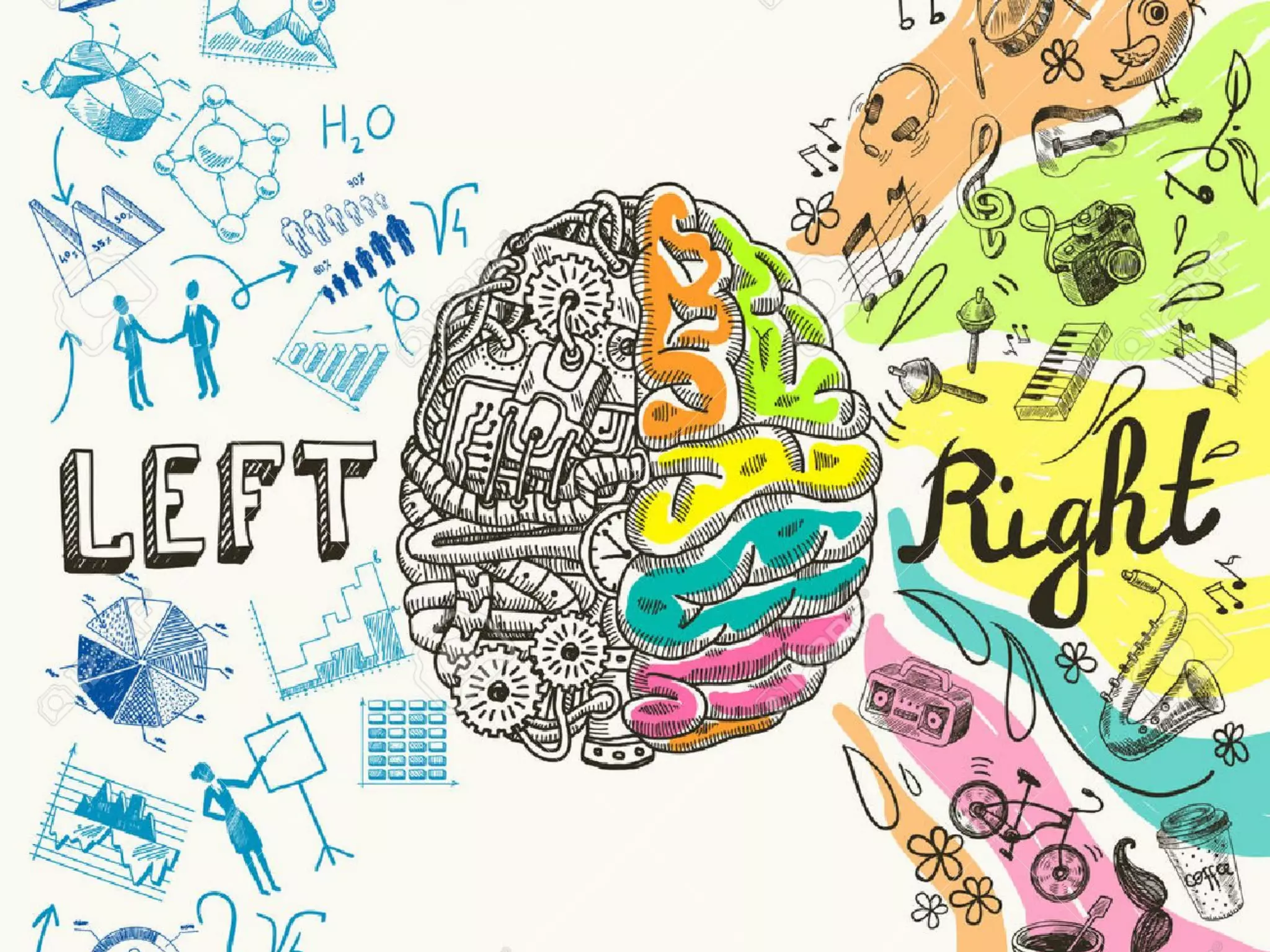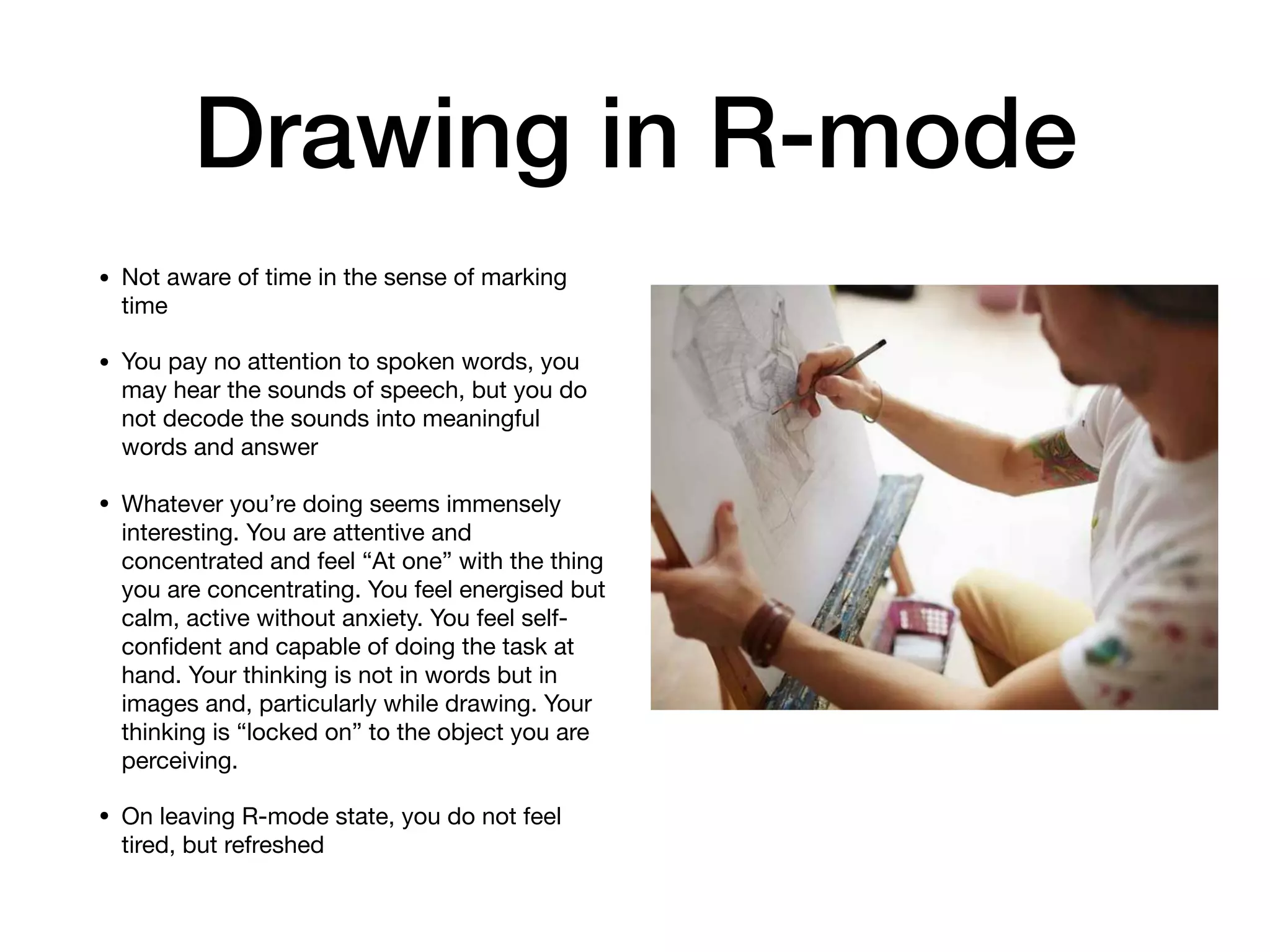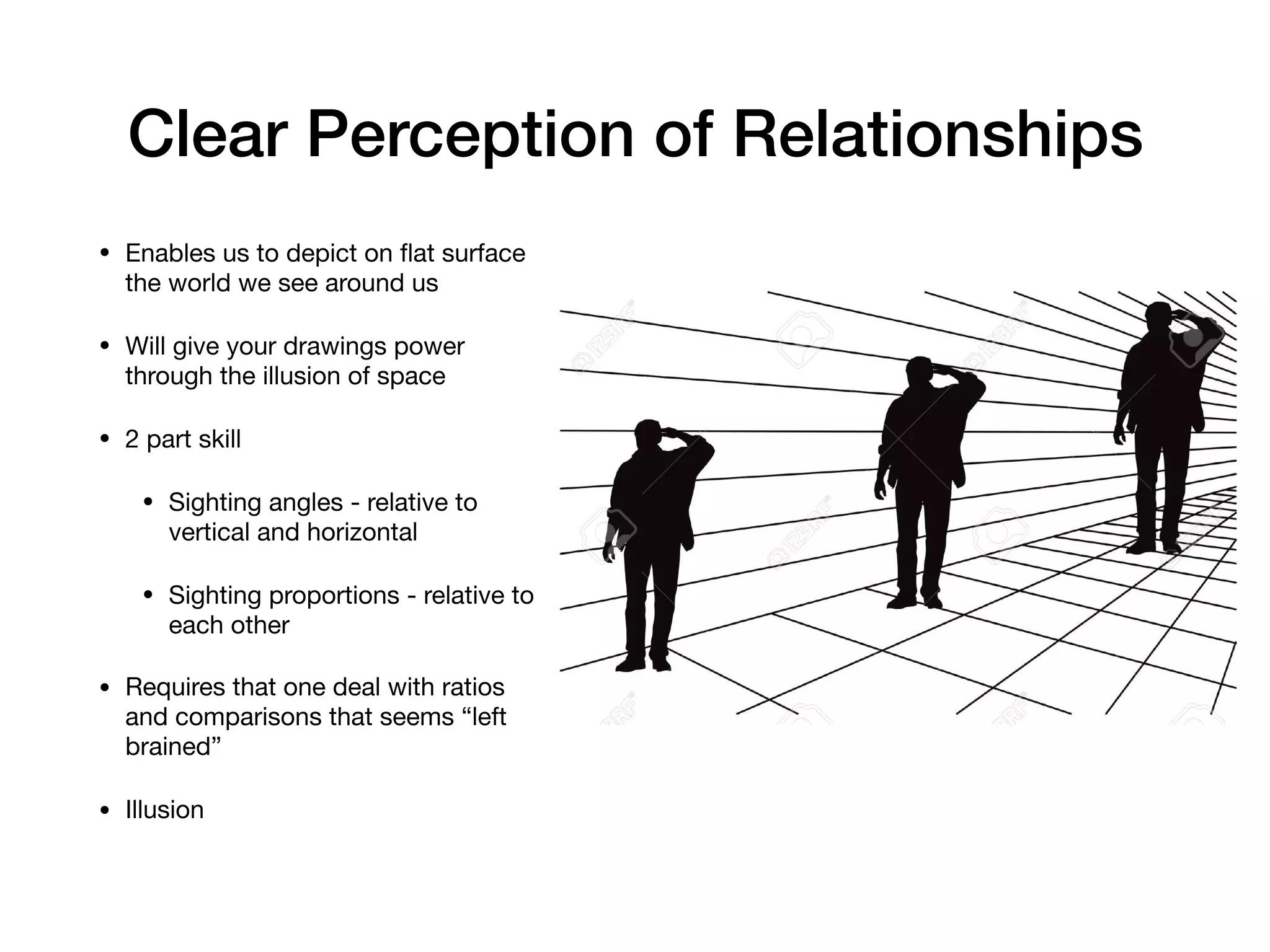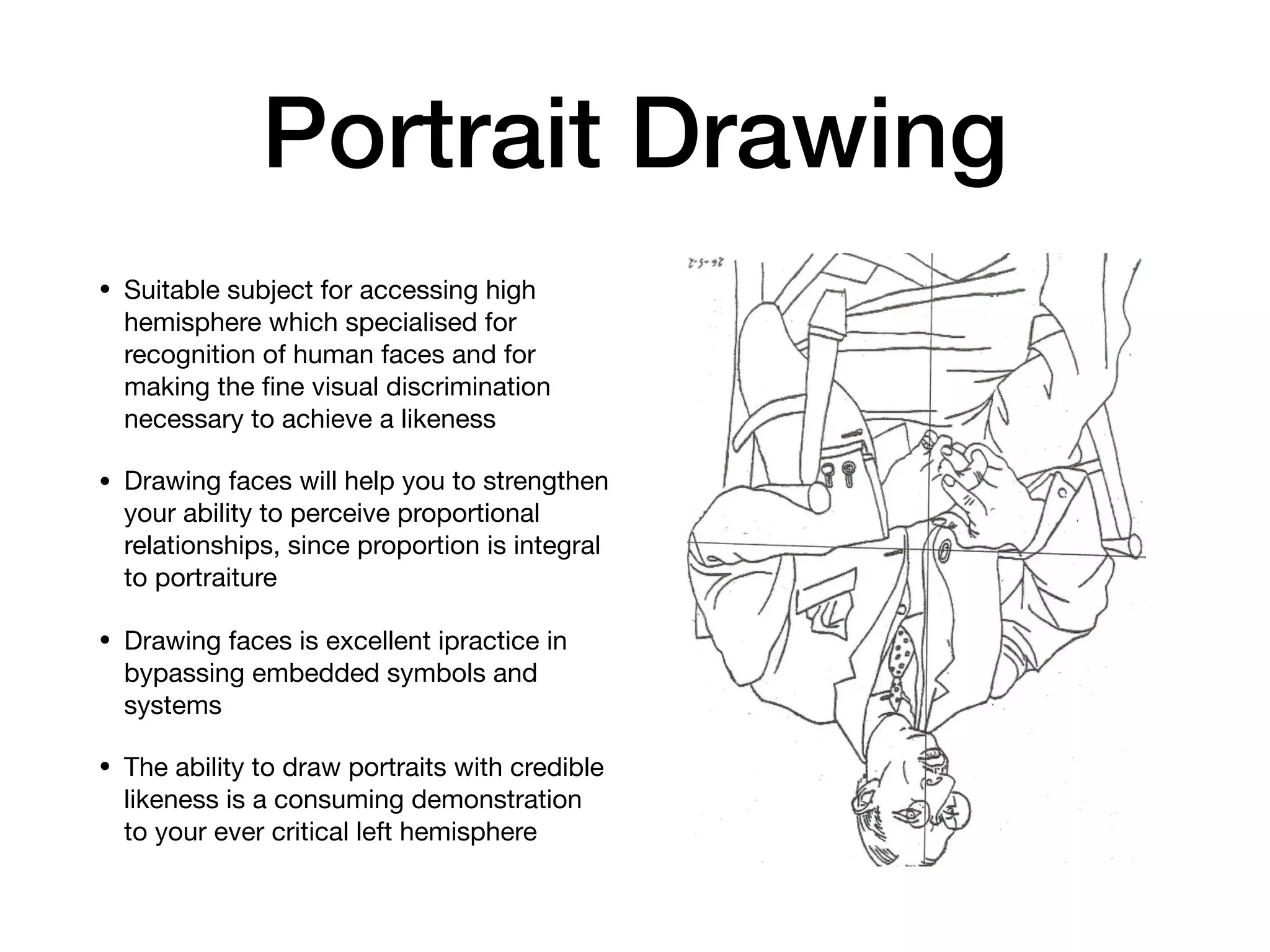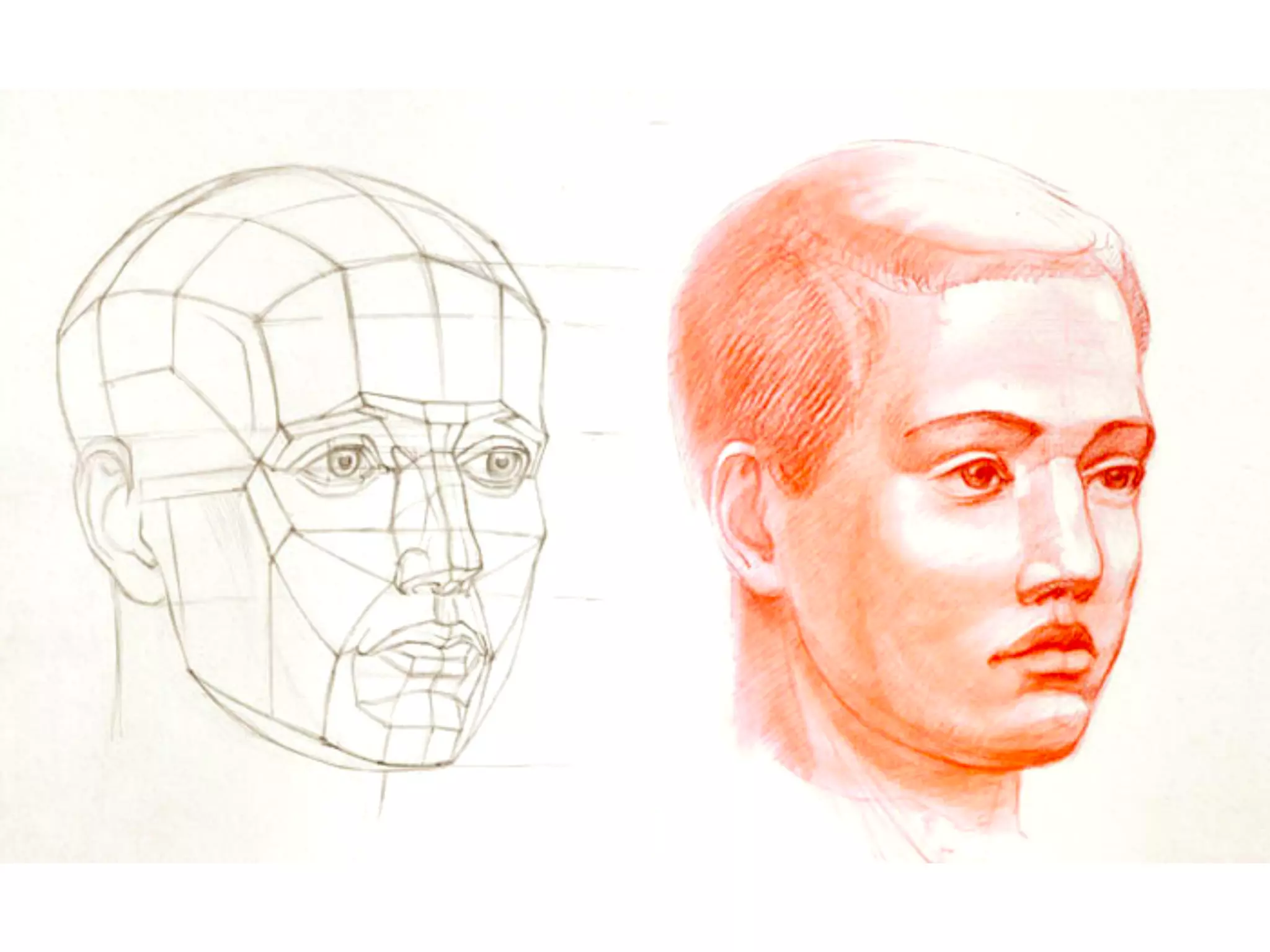The document explores the relationship between drawing and visual perception processes in the brain, emphasizing the distinction between left and right hemisphere functions in artistic perception. It discusses the importance of accessing the right hemisphere's mode for drawing and provides exercises to enhance perceptual skills such as the perception of edges, spaces, and relationships. Additionally, the document highlights how learning to draw can improve one’s ability to see and interpret visual information more accurately.

